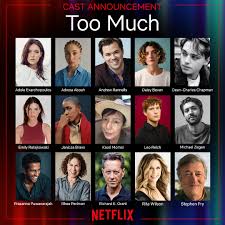
Introduction
The importance of an effective cast in film and theatre cannot be overstated. A carefully selected group of actors can elevate a story, enhancing its emotional depth and capturing audience attention. However, an oversaturated cast—often referred to as having ‘too much cast’—can lead to complications that diminish the overall impact of a production. This issue has gained increasing relevance in recent theatre and cinematic discussions, prompting both creators and audiences to consider the balance needed for successful storytelling.
Recent Trends in Casting Practices
Modern productions often see large ensembles, especially in musicals and epic films. The recent resurgence of ensemble casts can be credited to the success of shows like “Hamilton” and films such as “Avengers: Endgame.” However, as production teams are tempted to include numerous high-profile actors, concerns about narrative clarity and character development arise. Industry professionals note that when too many actors vie for the audience’s attention, individual performances can become overshadowed, making it challenging for viewers to engage with the story.
Challenges Arising from Oversized Casts
One of the primary challenges of having an oversized cast is the potential for diluted character arcs. Each character’s development can be sidelined, leaving the audience feeling disconnected or confused, particularly if the narrative becomes fragmented. Furthermore, logistical difficulties, such as scheduling conflicts and coordinating rehearsals, can complicate the production process. The recent Broadway production of “The Music Man” faced criticism for its large ensemble, which some audience members felt detracted from the central story. Critics have argued that such scenarios illustrate how ‘too much cast’ can result in a diluted theatrical experience.
Industry Perspectives
Directors and producers are becoming increasingly mindful of these challenges. Emma Rice, a noted director, recently shared her views in a trade publication, stating, “Balancing a large cast is a double-edged sword; while it can bring energy and diversity to a production, it can also create chaos if not managed properly.” This sentiment reflects the industry’s ongoing exploration of how to best optimise ensemble sizes, ensuring that each actor contributes meaningfully to the overall performance.
Conclusion
While having ‘too much cast’ can create a plethora of opportunities for diverse storytelling, it also poses significant risks for narrative coherence and audience engagement. Going forward, both directors and producers must weigh the merits of large ensembles against the necessity for focus and clarity. As the landscape of theatre and film continues to evolve, thoughtful casting decisions will remain crucial to ensuring that audiences remain captivated by the stories being told. This balance will ultimately define the future direction of productions in a world where less can often mean more.
You may also like

Spotlight on Strand Larsen: Innovating Maritime Solutions

Understanding CBBC: A Gateway to Children’s Entertainment
